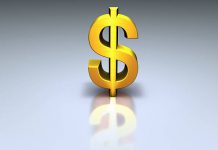Markets
The EuroStoxx 50 has been trying to take out the mid-August cycle top (4242) since the beginning of September. A handful of failed attempts later, investors decided to lock in some profits by taking chips off the table. Main European indices lost up to 1% with the German Dax (-1.5%) underperforming. US stock markets managed to limit losses to 0.5%. The fragile risk sentiment is especially already visible some time on Asian markets, part result of the Chinese regulatory crackdown, part related to the spreading Delta-variant and its implications to (local) production. In any case, risk-off spilled to Europe and US as well with Tuesday’s sudden, though still extremely confined, pick-up in (especially US) real rates perhaps serving as a wake-up call. Risk aversion worked its way through main FI and FX markets. Core bonds profited while the US dollar only found its equal in the Japanese yen. US Treasuries outperformed German Bunds. The US yield curve bull flattened with yields ending 0.4 bps (2-yr) to 3.5 bps (10-yr) lower. Yield declines on the German yield curve remained limited to almost nothing ahead of today’s ECB meeting. On the US side of the story, we noticed a very strong 10-yr Note sale and a continuation of split FOMC views. NY Fed Williams’s speech was a near copy of Powell’s Jackson Hole address while regional Fed governor Kaplan argued for a quick taper. Risk off pushed EUR/USD to a 1.1816 close from an 1.1840 open while USD/JPY stabilized at 110.25.
Eyes turn to Frankfurt and ECB Lagarde today. Newly available growth and inflation forecasts are expected to show again upward revisions. Together with looser financial conditions, we think they will be the cue to slow down weekly PEPP purchases, especially with GDP growth hitting peak speed and inflation running above target. It might be too early to already provide guidance on how the post-PEPP (March 2022) transition period will look like, but our base scenario takes into account higher APP purchases to avoid a (too) steep drop in overall bond buying. A more bullish economic assessment, rising inflation risks and slowing down weekly PEPP purchases in theory boost the case for a stronger euro and firmer rates. EUR/USD 1.1909 and -0.25% for the 10-yr German yield are the next high profile resistance levels, but are probably too far away to force already breaks higher.
News headlines
The Polish central bank (NBP) left policy unchanged yesterday. By keeping the main reference rate at 0.10% and continuing to buy government bonds it is supporting an economy that is still facing uncertainty from the pandemic. That said, growth in the second quarter this year increased to 11.1% y/y and with the recovery expected to continue in coming quarters. Labour market conditions have improved in Q2 but average wage growth is still persistently below than before the pandemic. The current high and above-target inflation (5.4% in August) is therefore still judged temporary (base effects, supply chain disruptions …) and driven by others factors beyond the scope of monetary policy. The NBP nonetheless foresees inflation to be above the upper bound of the target in coming months. Markets recently begun pricing a first rate hike at the November meeting. Yesterday’s zloty price action suggests the NBP meeting has changed little to that view. EUR/PLN only marginally advanced to 4.52.
US Treasury Secretary Yellen in a letter to congressional leaders warned the US Treasury could run out of cash next month unless Congress agrees to increase the borrowing limit. Not doing so would mean a default by the US on its debt obligations. In the meantime, Treasury draws down from its account with the Federal Reserve but the cash pile over there has shrunk considerably in recent months, admittedly from enormous levels. In recent years, the topic of raising the so-called debt ceiling was often subject to very heated discussions that only resulted in a last-minute solution. Yellen said that even this could already cause harm to business and consumer confidence. The issue might complicate the Biden administration’s efforts to pass a multi-trillion dollar agenda. It is likely that Republicans demand concessions before approving to raise the debt ceiling.











